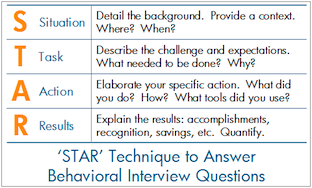The concept of career-as-narrative is not new. Scholars like Larry Cochran and Kerr Inkson, both of whom I mention in this article, have written extensively about the notion.
Now life strategist Walter Akana has taken the concept to a new level in a terrific blog post entitled The Job Interview As Shared Narrative written as part of the Career Collective in which we both participate.
Akana begins with the career-as-narrative and relates it to the commonly accepted concept of deploying storytelling in job interviews:
Taken as a whole … individual instances of success and failure weave the story of our career, and perhaps even our life message [Akana explains via a link here that life message is a Tom Peters term that relates to Gandhi’s philosophy that his life was his message.] While seemingly disparate elements, they are episodes, or chapters, or plot lines that form a larger narrative. In fact, this relationship to story is not novel. It is clearly captured in the most fundamental approach to interview prep: create accomplishment stories to describe your experience. It’s what the STAR Technique [Here, Akana nicely links to an explanation of the STAR technique on A Storied Career’s parent site, Quint Careers.] is all about; namely, creating stories that tie together discrete situations and/or tasks faced, action steps taken, and results achieved
Our careers represent our narrative, with stories that get told in formal performance meetings, in “water cooler” chatter, after hours with colleagues and friends, during mentoring conversations, and while networking generally. Indeed, our stories are what give us visibility and credibility inside of the communities of practice made up of the people who do what we do, and more broadly in brand communities that include the people we serve.
But here’s where Akana gets really innovative, suggesting that the job-seeker need not be the only storyteller in the interview:
I believe that thinking of our careers as narrative has a powerful implication for how we conceive of professional interactions, in general, and job interviews, in particular. And it’s this: discussions of our professional experience are truly opportunities for shared narrative. Trading stories with an interviewer about our shared experience allows for a sharing of meaning, and supports the kind of bonding that takes place in discovering the things we share in common. It is a fundamental human need that drives folklore, which is often a device for transmitting a culture’s morals and values.
Akana clearly understands the kind of storied emotional bond I wrote about in Tell Me About Yourself:
Stories establish an emotional connection between storyteller and listener and inspire the listener’s investment in the storyteller’s success. When stories convey moving content and are told with feeling, the listener feels an emotional bond with the storyteller. Often the listener can empathize or relate the story to an aspect of his or her own life. That bond instantly enables the listener to invest emotionally in your success.
This job-interview story-sharing can help establish cultural fit, Akana notes — does the candidate fit in with the employer’s organization, and does the organization fit the candidate: “If the final outcome of a job interview is to select the candidate who has not only the required skills but also represents the best cultural fit, then your ability to engage in shared narrative over the course of the process can have an impact on your success.”
And bonus! In one of the above passages, Akana linked to a narrative site that was new to me and very interesting,  The Shared Narratives project, “a group of websites developed around the idea of collective documentary storytelling about common yet evocative themes. The Shared Narratives sites utilize several emerging web techniques such as the use of blogging systems, photo, audio and video sharing, folksonomies (also known as collective tagging), geocoding (location-based tagging), and user generated content.”
The Shared Narratives project, “a group of websites developed around the idea of collective documentary storytelling about common yet evocative themes. The Shared Narratives sites utilize several emerging web techniques such as the use of blogging systems, photo, audio and video sharing, folksonomies (also known as collective tagging), geocoding (location-based tagging), and user generated content.”
